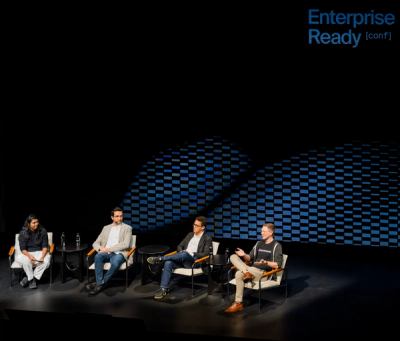
Security News
OWASP 2025 Top 10 Adds Software Supply Chain Failures, Ranked Top Community Concern
OWASP’s 2025 Top 10 introduces Software Supply Chain Failures as a new category, reflecting rising concern over dependency and build system risks.
@triangular/fluid-simulation
Advanced tools
If you want to use a fancy WebGL fluid simulation in your Angular App, this small demo can get you started.
If you want to use a fancy WebGL fluid simulation in your Angular App, this small demo can get you started.
You can see the component running in the background of the example app. Press p to toggle the pause, and press s to download a screenshot of the simulation. Press w to create more splashes.
You can find the live demo at: https://fluid-simulation.akehir.com.
If you just want to use the library, follow the following 3 simple steps. For contributing, or building the library locally, see the section on building the library.
Supported Angular Versions
| Angular Version | WebGL Fluid Simulation V |
|---|---|
| 7.x, 8.x | 1.0.1 |
| 9.x | ^2.0.0 |
| 10.x | ^3.0.0 |
| 11.x | ^4.0.0 |
| 12.x | ^5.0.0 |
| 13.x | ^6.0.0 |
Install the npm package.
npm i @triangular/fluid-simulation
Then, add the FluidSimulationModule to the imports of your app.
import { FluidSimulationModule } from '@triangular/fluid-simulation';
@NgModule({
declarations: [
AppComponent,
...,
],
imports: [
...,
FluidSimulationModule.forRoot(),
],
providers: [],
bootstrap: [AppComponent]
})
export class AppModule { }
Now you can use the provided component to create a canvas element with the simulation.
<webgl-fluid-simulation></webgl-fluid-simulation>
Depending on whether you want to use certain features, or positions for the module, you can add styles as follows. It is important to note, that the canvas itself should not be absolutely positioned.
webgl-fluid-simulation {
top: 0;
left: 0;
right: 0;
bottom: 0;
position: absolute;
z-index: -1;
}
webgl-fluid-simulation canvas {
width: 100%;
height: 100%;
/* the canvas position cannot be absolute, otherwise the js resize will bug out */
position: fixed;
}
You can configure your module by using the FluidSimulationModule.forRoot() method.
@NgModule({
declarations: [
AppComponent,
ExampleComponent,
],
imports: [
BrowserModule,
FluidSimulationModule.forRoot({
SCREENSHOT_KEY_CODE: 'KeyS',
PAUSE_KEY_CODE: 'KeyP',
SPLASH_KEY: 'w',
DITHERING_TEXTURE: true,
DITHERING_TEXTURE_URI: 'assets/LDR_LLL1_0.png',
}),
],
providers: [],
bootstrap: [AppComponent]
})
export class AppModule { }
In order to change the config interactively (for instance pausing and playing the simulation, or changing the settings) , you can use the provided service.
The service will be extended to include more functionality (for example triggering screenshots or adding splashes).
import { Component } from '@angular/core';
import { FluidSimulationService } from '@triangular/fluid-simulation';
@Component({
selector: 'app-example',
templateUrl: './example.component.html',
styleUrls: ['./example.component.css'],
})
export class ExampleComponent {
constructor(private fluidSimulation: FluidSimulationService) { }
onClick() {
// Toggle the simulation
this.fluidSimulation.PAUSED = !this.fluidSimulation.PAUSED;
}
}
As a pre-requisite to build the library, you need to install all the dependencies via npm install or yarn.
Before the sample app can be run, you need to build the library itself.
npm run ng -- build fluid-simulation-lib --progress=false
After building the library, it is either possible to build the sample app, via
npm run ng -- build example-app --prod --progress=false
,or to run the sample app with a local dev server:
npm run ng -- serve
There are not many tests, but those that are can be run with:
npm run test -- --no-watch --progress=false --code-coverage --browsers ChromeHeadless
The project follows the angular style guide and lints with the following command:
npm run lint
Please read CONTRIBUTING.md for details on our code of conduct, and the process for submitting pull requests to us.
We use SemVer for versioning.
See also the list of contributors who participated in this project.
This project is licensed under the MIT License - see the LICENSE.md file for details
FAQs
If you want to use a fancy WebGL fluid simulation in your Angular App, this small demo can get you started.
We found that @triangular/fluid-simulation demonstrated a healthy version release cadence and project activity because the last version was released less than a year ago. It has 1 open source maintainer collaborating on the project.
Did you know?

Socket for GitHub automatically highlights issues in each pull request and monitors the health of all your open source dependencies. Discover the contents of your packages and block harmful activity before you install or update your dependencies.

Security News
OWASP’s 2025 Top 10 introduces Software Supply Chain Failures as a new category, reflecting rising concern over dependency and build system risks.

Research
/Security News
Socket researchers discovered nine malicious NuGet packages that use time-delayed payloads to crash applications and corrupt industrial control systems.

Security News
Socket CTO Ahmad Nassri discusses why supply chain attacks now target developer machines and what AI means for the future of enterprise security.